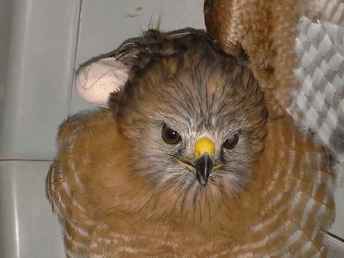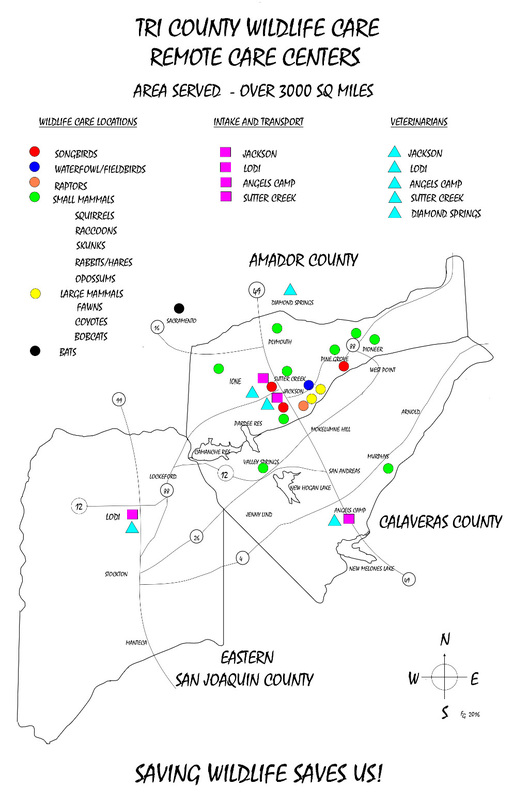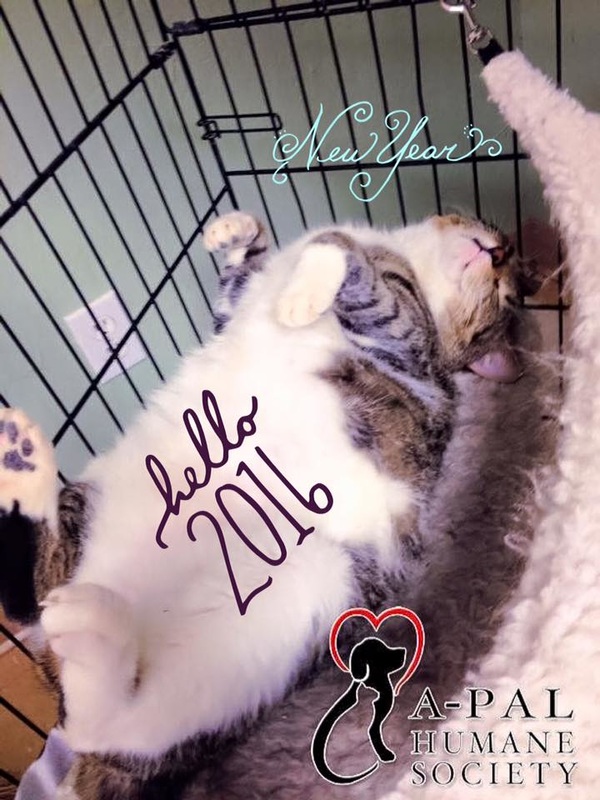|
0 Comments

We all know that the real Santa Claus is the spirit of kindness that lives within us all. It is with that spirit, that Larry took a Western Bluebird that he found, flopping around on the road, into the care of Tri County Wildlife Care on Christmas Day 2015.
This brilliant blue bird had a broken left wing that needed to be wrapped to heal. The wrap is relatively simple, but it took 4 attempts to get it just the right tightness and to perfectly align the bones for healing. Birds bones are hollow to keep them light for flight. These bones heal in an amazing 5 to 7 days, so it is critical that TCWC get birds in quickly to assure proper bone alignment. This beautiful bird healed quickly and it was next the job of Tri County Wildlife Care to assure this Western Bluebird was able to fly well again and in good body condition to return to the wild. It was also important to return him to his home because these birds are territorial and this bird had stayed behind as a "defender". Some of our Bluebirds migrate and some stay behind to defend the territory of the group. In the Spring, the birds that have migrated will return and more females will move in to breed. If there is a shortage of females, males will feed one or sometimes even two nests. The females will brood the eggs and will remain on the nest for about 10 days after the eggs hatch before leaving. The males do the job of bringing food to the nest and continue feeding until the babies fledge. This cooperative behavior helps to assure these birds thrive. On January 20, 2016, TCWC finally saw a couple of rain clear days to set this bird free in his home territory. Our "Santa", Larry was able to share in what Tri County Wildlife Care calls their payday. This beautiful Western Bluebird flew up, strong and free, into the trees to continue his job of defending his territory.

The Hopi discovered the Common Poorwill long before scientists did in the 1940s which is apparent from the name they gave it which means, "the Sleeping One." The Common Poorwill will in cold Winter months go into a torpid state for days to weeks, lowering body heat, heartbeat and breathing rate.
This bird nests on the ground and eats insects and they prefer open scrub areas. The camouflage they have is amazing and so appropriate for their habitat. They make short flights upwards to catch flying insects which is what makes them so difficult to rehabilitate in captivity. These birds must be force fed. If they are deprived of food, they will go into a torpid state. Our goal is to get them healthy and back out into their habitat as quickly as possible. This bird came in from a work camp soaking wet and with all sorts of debris stuck in its feathers. Clearly it would not have survived without the kindness and caring of the workers. Because of the large dark eyes and round head, it is not uncommon for these birds to be mistaken for owls. As luck would have it, Pat picked the bird up as an owl and bought it to me. It is now dry and hissing at me and should be able to go back to where it came from in a few days.

Western Screech Owls are small with feathered ear tufts and gray to brown with black streaks on the feathers. One of the most common reasons we get these owls in is because they are hit by cars.
We have two Screech Owls now in our care and both have a single eye injury with probable blindness. Our first job is to stabilize them with fluids and heat. This owl weighs only 4 to 10 ounces, so it is amazing that they do sometimes survive this trauma. Their wingspan is about 24 inches and they are cavity nesting birds. Once these owls are stable, Pat will put them into a flight cage. It is amazing, but these owls are able to fly, hunt and thrive with only a single eye. We have an education bird, Mr. Marbles, who is totally blind, but he is able to fly and land. It is thought that with their exceptional hearing that they are able to do something like echolocation. We learn lessons with every patient and these little Western Screech Owls have taught us that even one eyed owls can thrive. Most importantly though, they taught us to listen and watch carefully to what they can do rather than what they cannot. This little owl is eating and we are hopeful we will be able to release him.
Butch is a 3 year old sweet male who just needed to be neutered to stop his wandering ways! He is now ready to settle down to be a cherished member of the family! He is such a love! Just waiting for his furever family at The Feed Barn (11261 Prospect Drive, Jackson Ca)! Stop by and meet him soon!

This Red Shouldered Hawk was found on the ground in Stockton and it was clear that it had a broken wing. What wasn't so clear was that it also had been attacked.
The feathering on these birds is both beautiful and thick which means that careful inspection for injuries is essential. Unfortunately, for this guy, the discovery of wounds also means there is a need to pluck feathers to treat them...OUCH! This hawk now is being medicated and has a wing wrap that will remain on for a couple of weeks until the bone has a chance to heal. Once the wrap comes off and the wounds are healing, he will go to a flight cage for flight testing and to strengthen flight. We will keep you posted and hope to share the release with you... Red Shouldered Hawks are are common medium sized hawk and they most often eat rodents, frogs and snakes. They are often noticed for their flashy colors, rust colored, white barred breast and rust colored shoulders with rust and white striped wings and a black and white striped tail.
Evelyn & Aimee stopped and turned around on Hwy 88 in Pioneer to pick up what they thought was a songbird until it sunk its claws into her hand. This is one lucky Northern Pygmy Owl and they do hunt during the day...it is thought the spots on the back of the head are false eyes.
ANIMALSCAPES of the Sierra Nevada Foothills is an art event put on by Calaveras Arts Council with the purpose of raising awareness to the many organizations and agencies that advocate for and nurture animals. Our Tri County Wildlife Care Education Ambassadors will appear at the three events which we hope will leave a lasting impression for the need for preservation.
As the first day of 2016 wraps up, we want to take a moment to thank you for your support through 2015! It's been a great and challenging year...we couldn't have done without you and our wonderful volunteers!
In December alone, A-PAL Humane Society adopted out 50 cats and kittens! That's a record! 50 forever homes found just in time for the holidays and new year, a brand new start. Thank you adopting! 512 cats and kittens total adopted in 2015! Also a record!! Here's looking forward to 2016! 365 more opportunities to do even more! Together we can save them all! From all of us here at A-PAL, wishing you and yours a blessed 2016
|
Archives
April 2024
Welcome!PawsPartners.org is an alliance formed between A-PAL Humane Society of Amador County and Tri County Wildlife Care, the latter serving native wildlife in Amador, Calaveras, and Eastern San Joaquin Counties. Since inception we have added the Shelter Partners volunteer group, who support our local Animal Control organization, and Amador County Animal Response Team (ACART). Categories
All
|














 RSS Feed
RSS Feed

